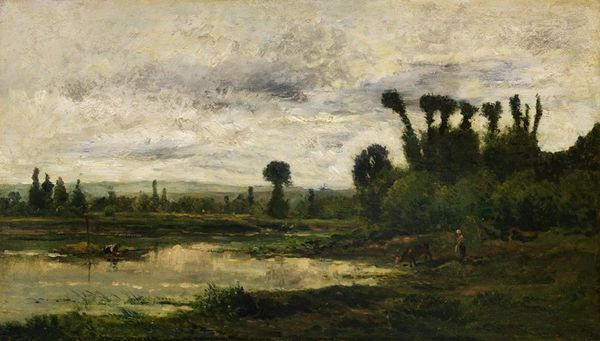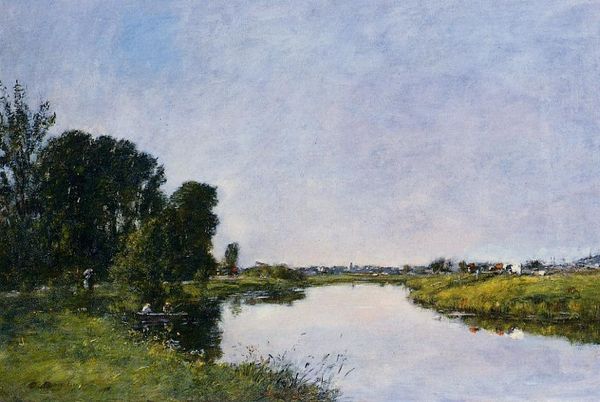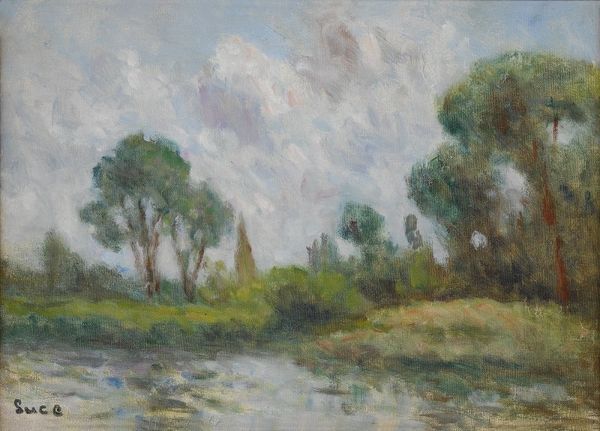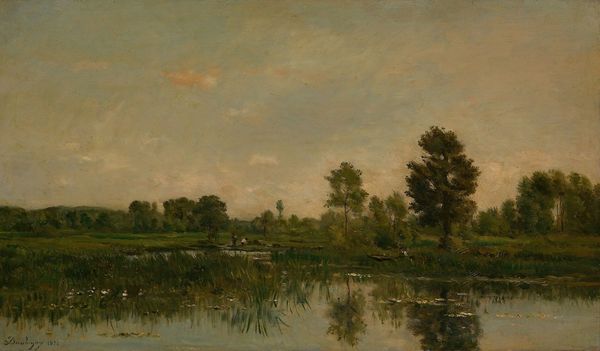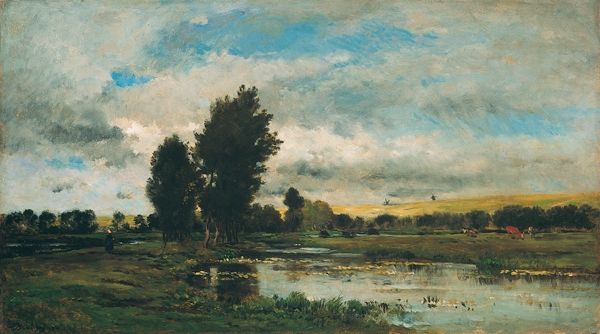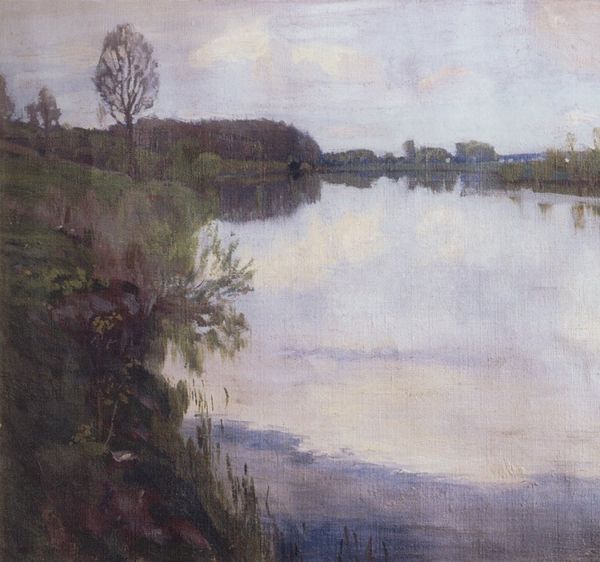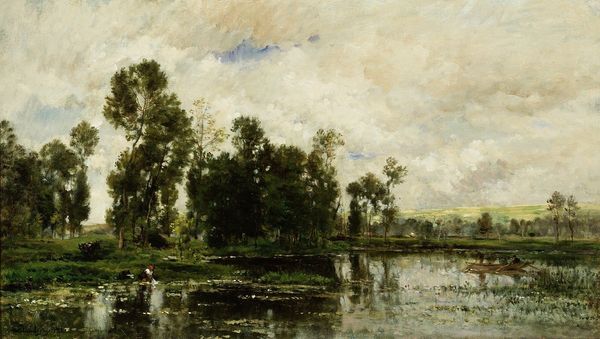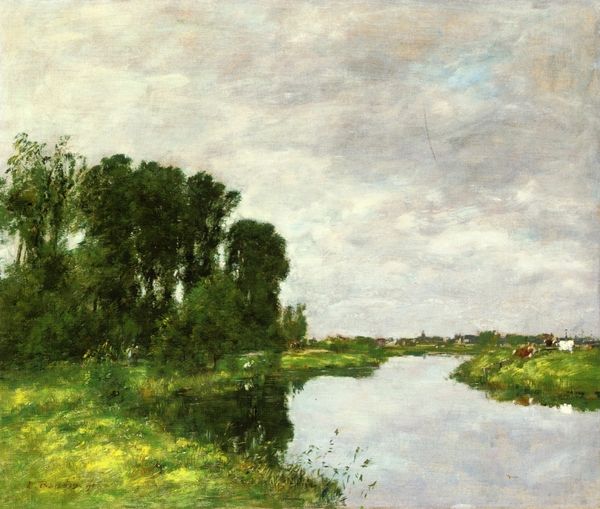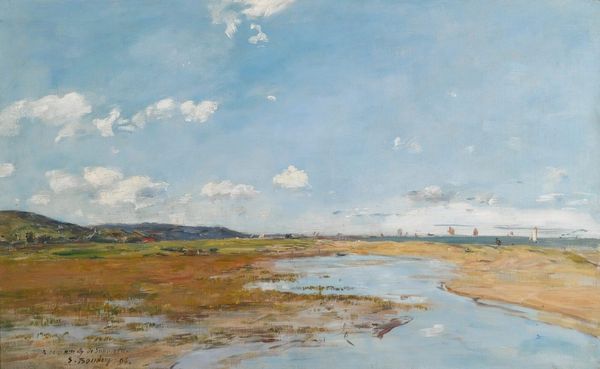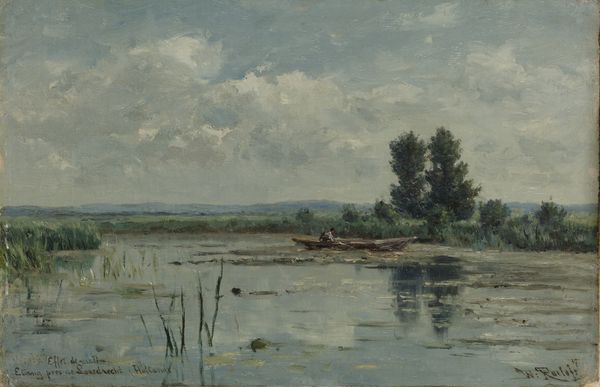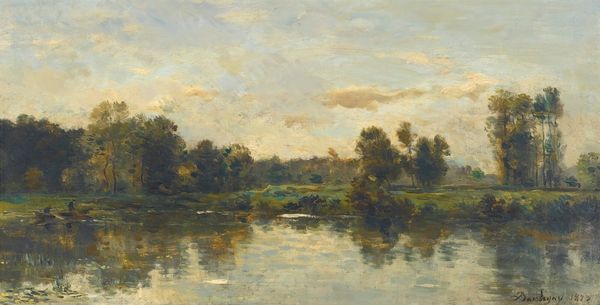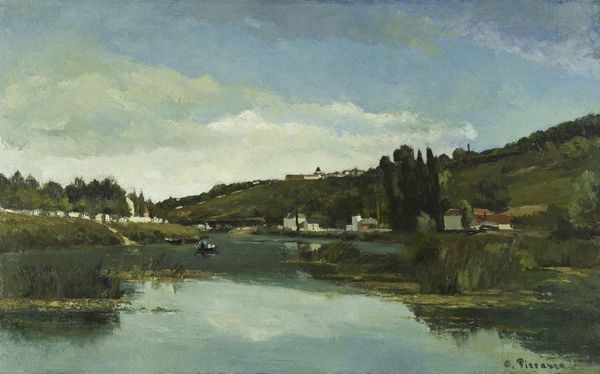
Copyright: Public Domain: Artvee
Curator: Eugène Boudin's "La Rivière morte à Deauville," painted in 1893, presents us with a serene waterscape rendered en plein air. Editor: It's undeniably gloomy. That sky dominates everything—heavy clouds hanging low. You can almost smell the damp air coming off the water. Curator: Boudin was a master of capturing atmospheric effects. Observe how the muted tones create a sense of tranquility, even melancholy. The "dead river," as the title translates, isn't literally lifeless, but possesses a stillness that evokes contemplation. Do you sense a deeper symbolic element, beyond surface-level observation? Editor: The title makes me wonder about the river's historical usage—was it a trade route that had become obsolete due to shifts in production or infrastructure? The application of the oil paint seems quite free and loose, as if quickly rendered, perhaps trying to document light reflecting from this waterway. How reliant was Boudin on preparatory sketches versus working directly in front of his subject matter, and what did the consumption of these portable landscapes signify? Curator: That idea about former routes makes me consider memory and loss, of nature, of simpler ways of life displaced by encroaching modernity. His brushstrokes, though seemingly effortless, serve to capture the essence of the Normandy coast, both its beauty and its fragility. It echoes sentiments of loss. It’s that melancholic peace that seeps through. The water doesn't really move; it mirrors. Editor: I am struck by the sheer labor it took to create the materials used. Pigment production in that era was intensive, the work of many hands, before Boudin applied those materials to his canvas. Considering that process emphasizes the social effort behind even these quieter moments of contemplation that appear to be created individually. It’s about community, commerce, access, and, of course, consumption. Curator: Yes, even tranquility is materially and culturally produced. Boudin captured a mood, hinting at stories beyond the visible surface, a sense of place imbued with shared cultural experience. Editor: I hadn't thought about it like that. Now I appreciate that the way it was made informs how we read into its calm facade.
Comments
No comments
Be the first to comment and join the conversation on the ultimate creative platform.
